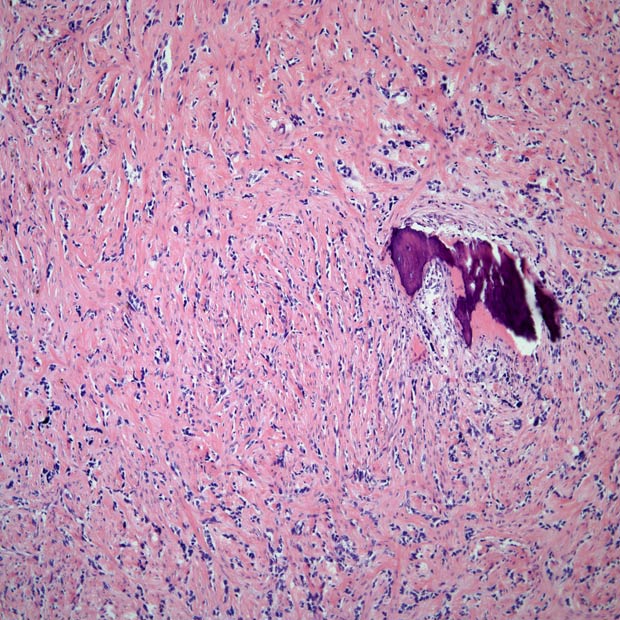Continuous Doxorubicin Does Not Improve Efficacy in Soft Tissue Sarcoma
A post hoc analysis indicates continuous intravenous infusion of doxorubicin does not yield additional benefit for patients with soft-tissue sarcoma compared with bolus delivery methods.
The use of continuous intravenous (IV) delivery of doxorubicin for patients with soft-tissue sarcomas did not result in improved outcomes compared with bolus delivery of doxorubicin, with investigators citing a need for further research regarding adverse effect mitigation strategies, according to results from a post hoc analysis of the phase 3 SARCO21 trial (NCT01440088).
Neither incidence of cardiac adverse effects (AEs) nor time to cardiac AEs differed between treatment groups in the phase 3 SARCO21 trial.

Investigators found cardiac adverse effects (AEs) were associated with cumulative doxorubicin. The median progression-free survival (PFS) was 6.14 months in the bolus arm vs 6.11 months in the continuous arm (P = .047). Additionally, the median overall survival (OS) was 18.4 months vs 21.4 months in each arm, respectively (P = .62).
The phase 3 SARCO21 trial evaluated the use of evofosfamide to determine if it could enhance doxorubicin use in the aforementioned patient population.
In the trial, 640 patients were enrolled, of whom 621 received protocol-specified therapy. Patients were eligible for treatment if they received a 12-lead ECG and had a left ventricular ejection fraction that was considered normal. Patients were excluded if they had prior anthracycline therapy, mediastinal cardiac radiation therapy, or used drugs with cardiotoxicity or interactions with doxorubicin.
Patients were randomly assigned 1:1 to receive either 75 mg/m2 of continuous IV single-agent doxorubicin on day 1 for up to 6 cycles or in combination with evofosfamide at 300 mg/m2 IV over 30 to 60 minutes on days 1 and 8 of each cycle. Regarding bolus delivery, patients were given doxorubicin on day 1 of each cycle for at least 5 minutes but no longer than 20 minutes, or continuous delivery for at least 6 hours.
The post hoc analysis looked at 541 patients receiving doxorubicin via bolus delivery and 80 receiving continuous IV delivery. Between both arms, most patients were given treatment in the metastatic vs the advanced setting. The mean baseline left ventricular ejection fraction was 64.4% in the continuous group vs 62.9% in the bolus group (P = .022).
When looking at treatment arms, 12.5% of patients receiving evofosfamide plus doxorubicin had continuous delivery vs 13.3% in the doxorubicin monotherapy arm. For patients getting continuous therapy, the mean number of cycles was 4.44 with a mean administration of 30.2 hours. Most patients were given infusions over a 48-hour period. For patients receiving bolus delivery, the mean number of cycles was 4.46, with a mean administration time of 0.4 hours.
Doxorubicin was given at 320 mg/m2 in the continuous arm vs 330 mg/m2 in the bolus delivery arm. For patients in the continuous group, 62% received a 300 mg/m2 cumulative dose of doxorubicin and 41% received 400 mg/m2 compared with 65% vs 48% in the bolus group, respectively. Additionally, in the bolus group, 5.8% of patients were given dexrazoxane as a cardioprotectant.
Between bolus or continuous administration, the occurrence of grade 3 to 5 hematologic, non-hematologic, and cardiac AEs did not differ. Baseline characteristics associated with these AEs included age, ECOG performance status, and histologic subtype.
If patients had pleomorphic sarcomas or fibrous histiocytomas, there was a higher probability of non-hematologic AEs. Treatment factors that were associated with non-hematologic AEs included receipt or prior radiotherapy, receiving the trial combination therapy,and cumulative evofosfamide dose.
Cardiac AEs occurred in 8.9% of patients receiving bolus delivery vs 8.8% receiving continuous delivery (P = 1.00). Neither incidence of cardiac AEs nor time to cardiac AEs (log-rank, P >.99), differed between delivery groups.
Because dexrazoxane was used as a cardioprotectant, the impact of cardiac AEs was investigated by repeating the full analysis. Investigators excluded 36 cases, all of which were in the bolus group. The delivery mode was not associated with cardiac AEs (P = .86), while cumulative doxorubicin was statistically associated with cardiac AEs (P <.001).
For patients who received 300 mg/m2 or 400 mg/m2 of cumulative doxorubicin, the higher doses showed an association with cardiac AEs.
Reference
Cranmer LD, Lu Y, Heise RS, et al. Bolus versus continuous intravenous delivery of doxorubicin in soft-tissue sarcomas: post hoc analysis of a prospective randomized trial (SARC021/TH CR-406). Clin Cancer Res. 2023;29(6):1068-1076. doi:10.1158/1078-0432.CCR-22-1564
Sarcoma Awareness Month 2023 with Brian Van Tine, MD, PhD
August 1st 2023Brian Van Tine, MD, PhD, speaks about several agents and combination regimens that are currently under investigation in the sarcoma space, and potential next steps in research including immunotherapies and vaccine-based treatments.